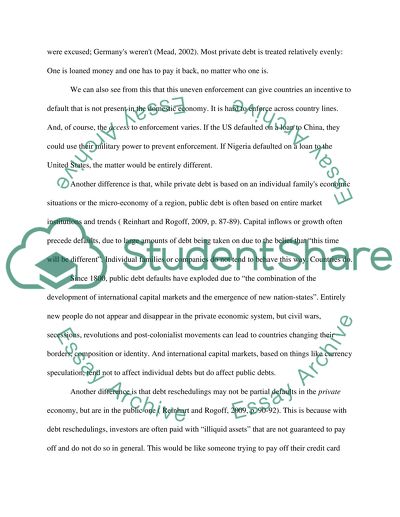Cite this document
(The Difference Between Private and Public Debts Case Study, n.d.)
The Difference Between Private and Public Debts Case Study. Retrieved from https://studentshare.org/macro-microeconomics/1574959-how-sovereign-nation-bankruptcies-differ-from-private-company-bankruptcies-and-does-a-default-on-domestic-debt-differ-from-a-default-on-foreign-debt
The Difference Between Private and Public Debts Case Study. Retrieved from https://studentshare.org/macro-microeconomics/1574959-how-sovereign-nation-bankruptcies-differ-from-private-company-bankruptcies-and-does-a-default-on-domestic-debt-differ-from-a-default-on-foreign-debt
(The Difference Between Private and Public Debts Case Study)
The Difference Between Private and Public Debts Case Study. https://studentshare.org/macro-microeconomics/1574959-how-sovereign-nation-bankruptcies-differ-from-private-company-bankruptcies-and-does-a-default-on-domestic-debt-differ-from-a-default-on-foreign-debt.
The Difference Between Private and Public Debts Case Study. https://studentshare.org/macro-microeconomics/1574959-how-sovereign-nation-bankruptcies-differ-from-private-company-bankruptcies-and-does-a-default-on-domestic-debt-differ-from-a-default-on-foreign-debt.
“The Difference Between Private and Public Debts Case Study”. https://studentshare.org/macro-microeconomics/1574959-how-sovereign-nation-bankruptcies-differ-from-private-company-bankruptcies-and-does-a-default-on-domestic-debt-differ-from-a-default-on-foreign-debt.


